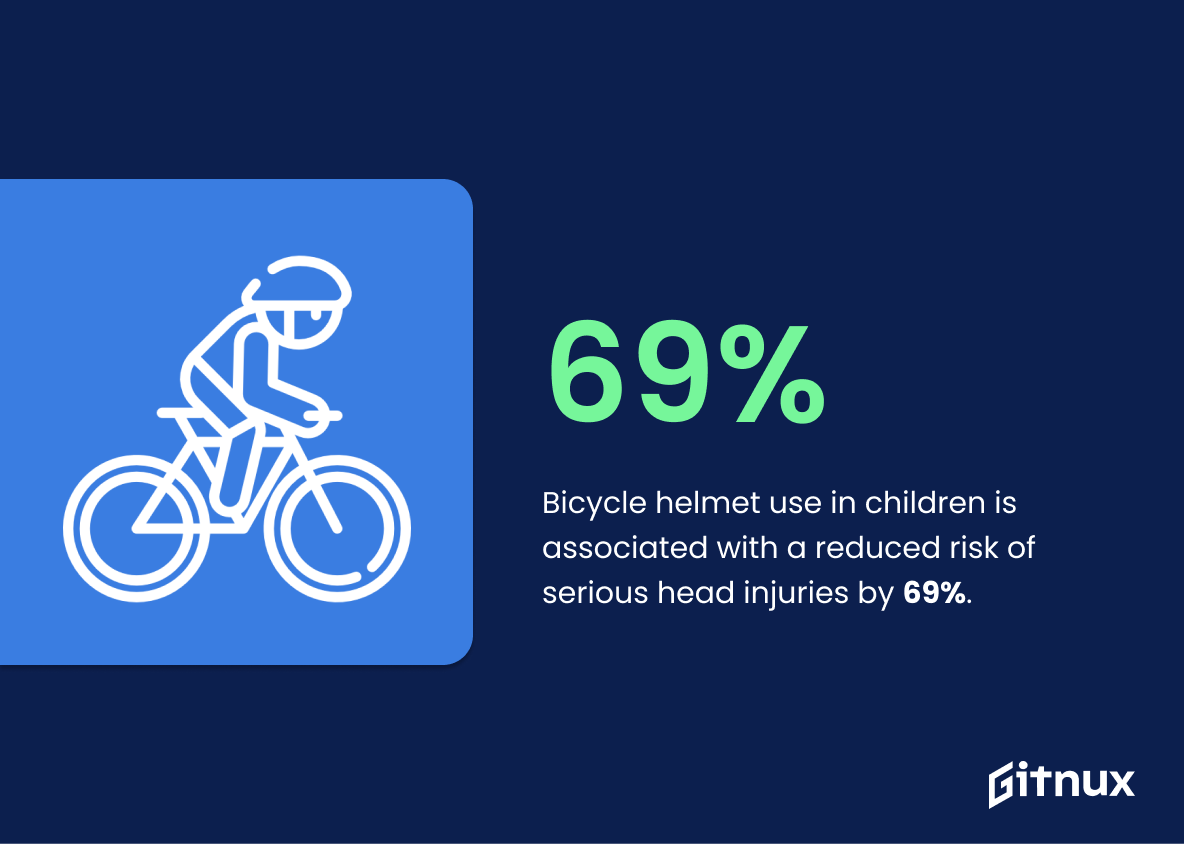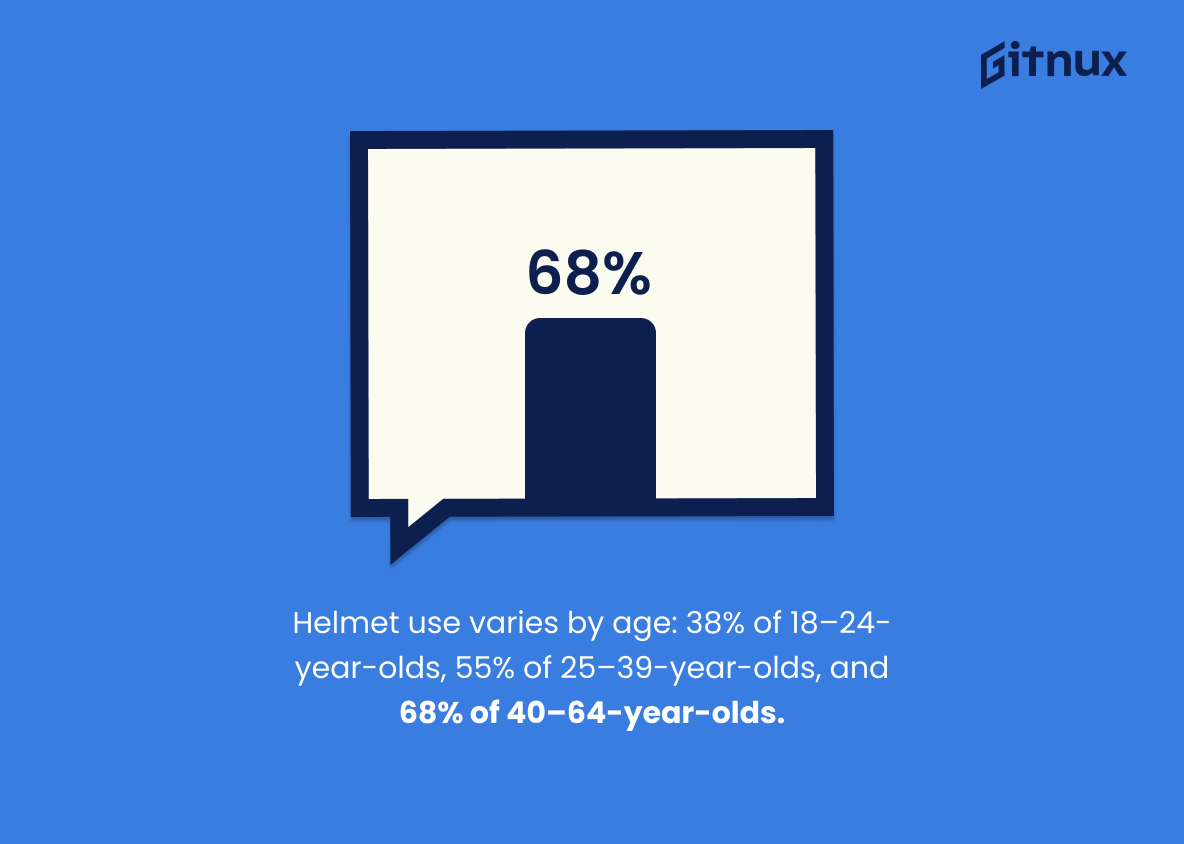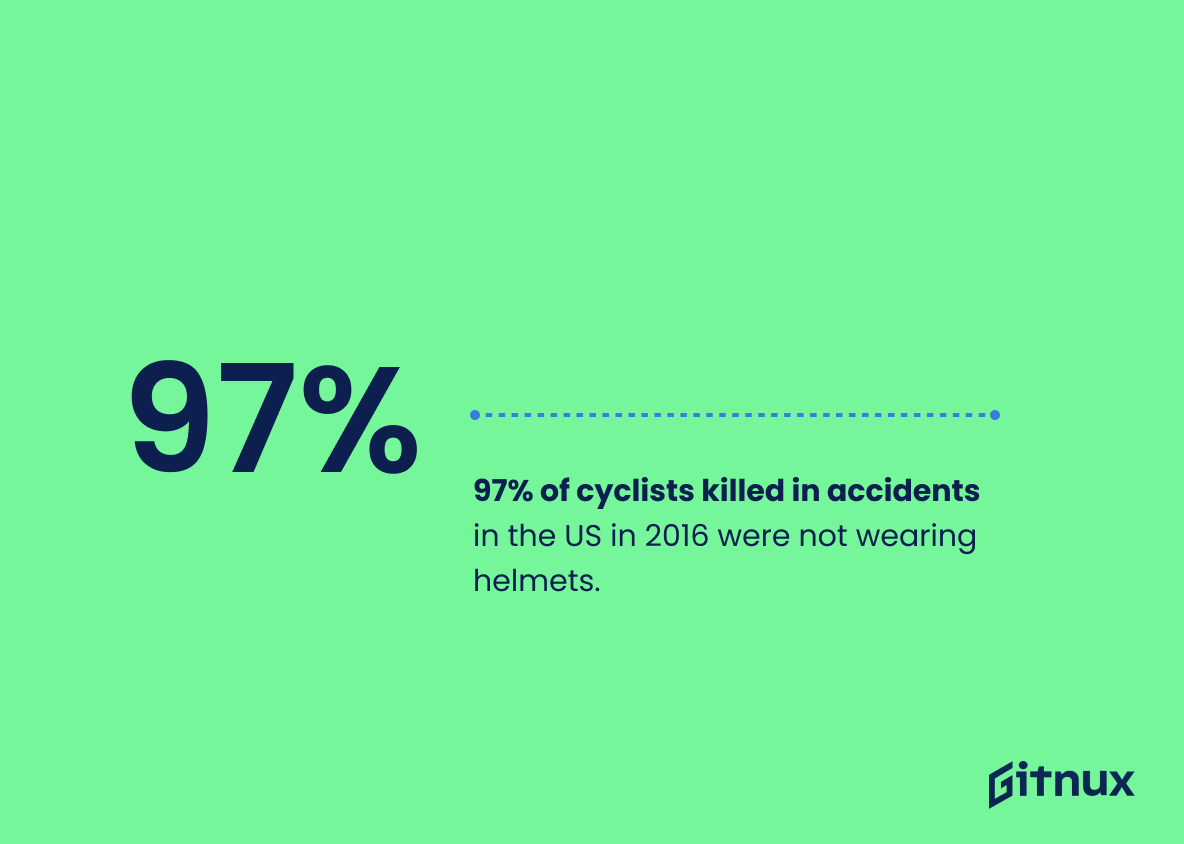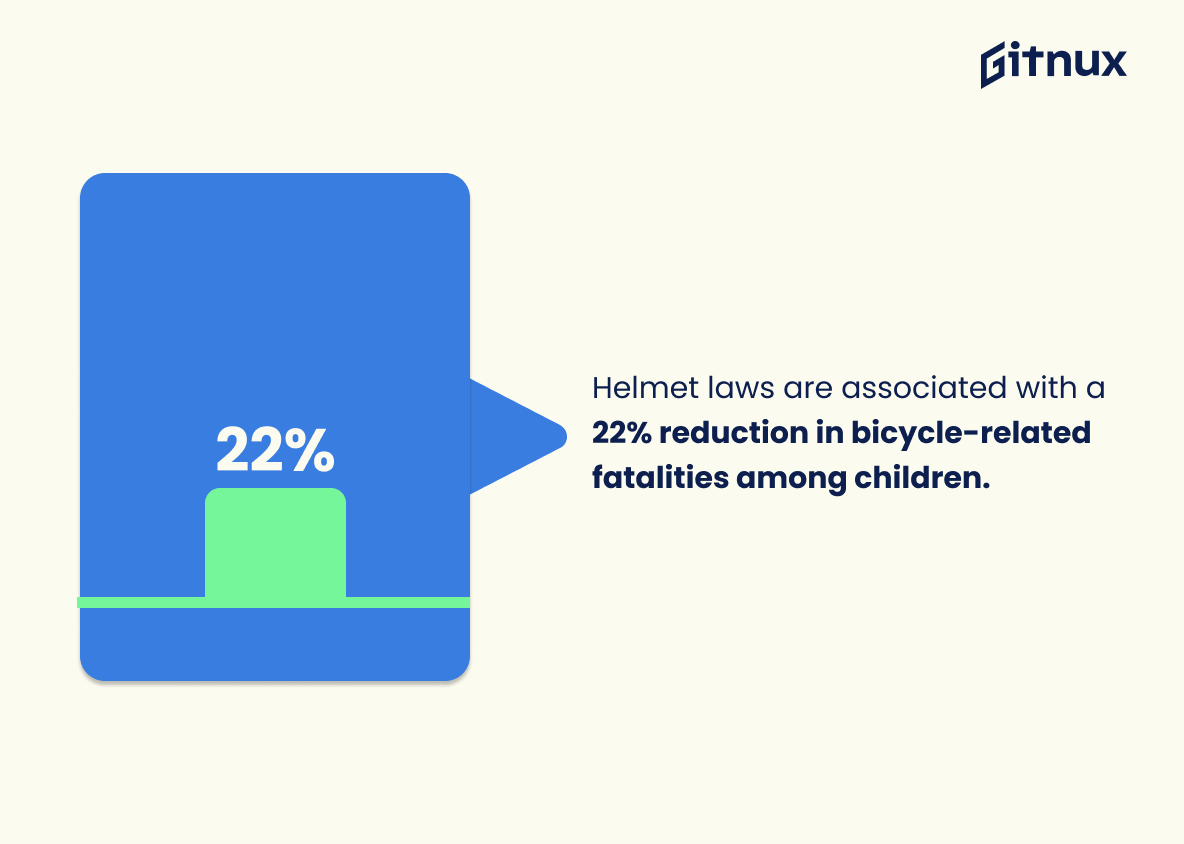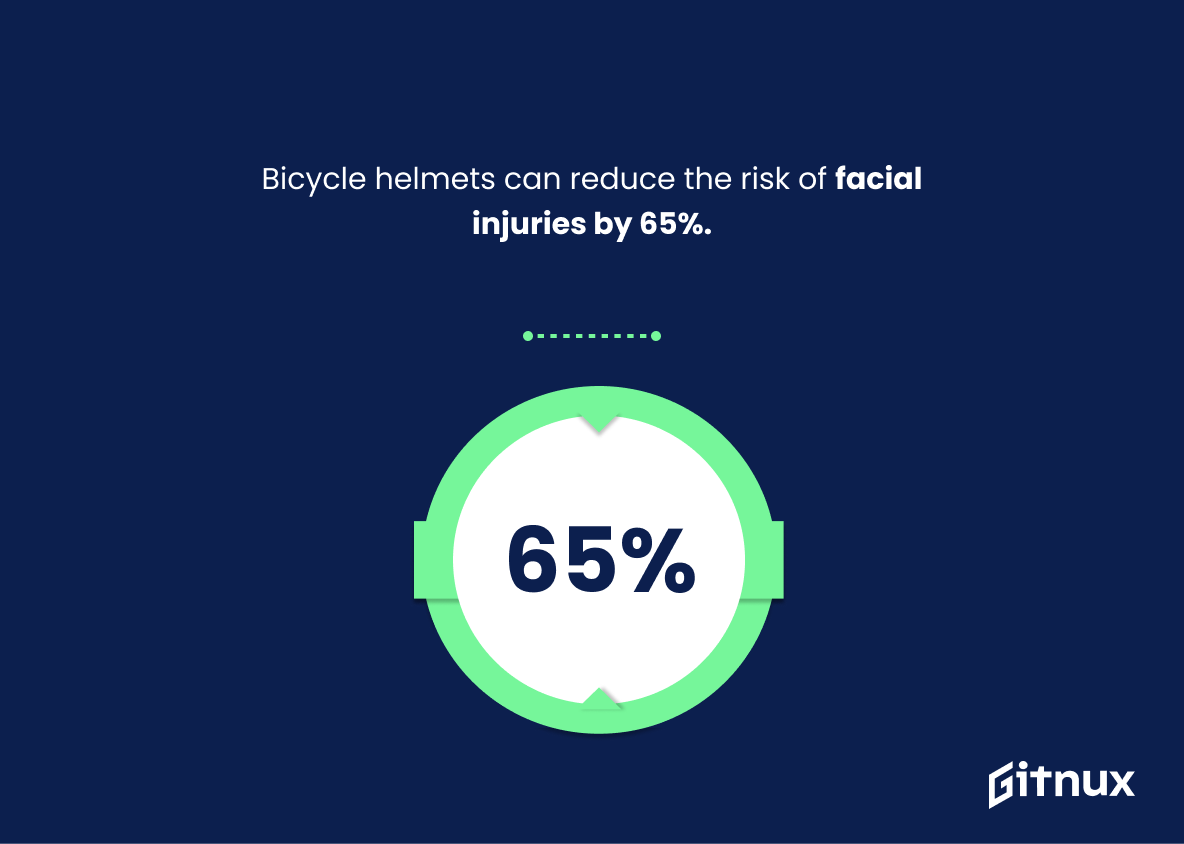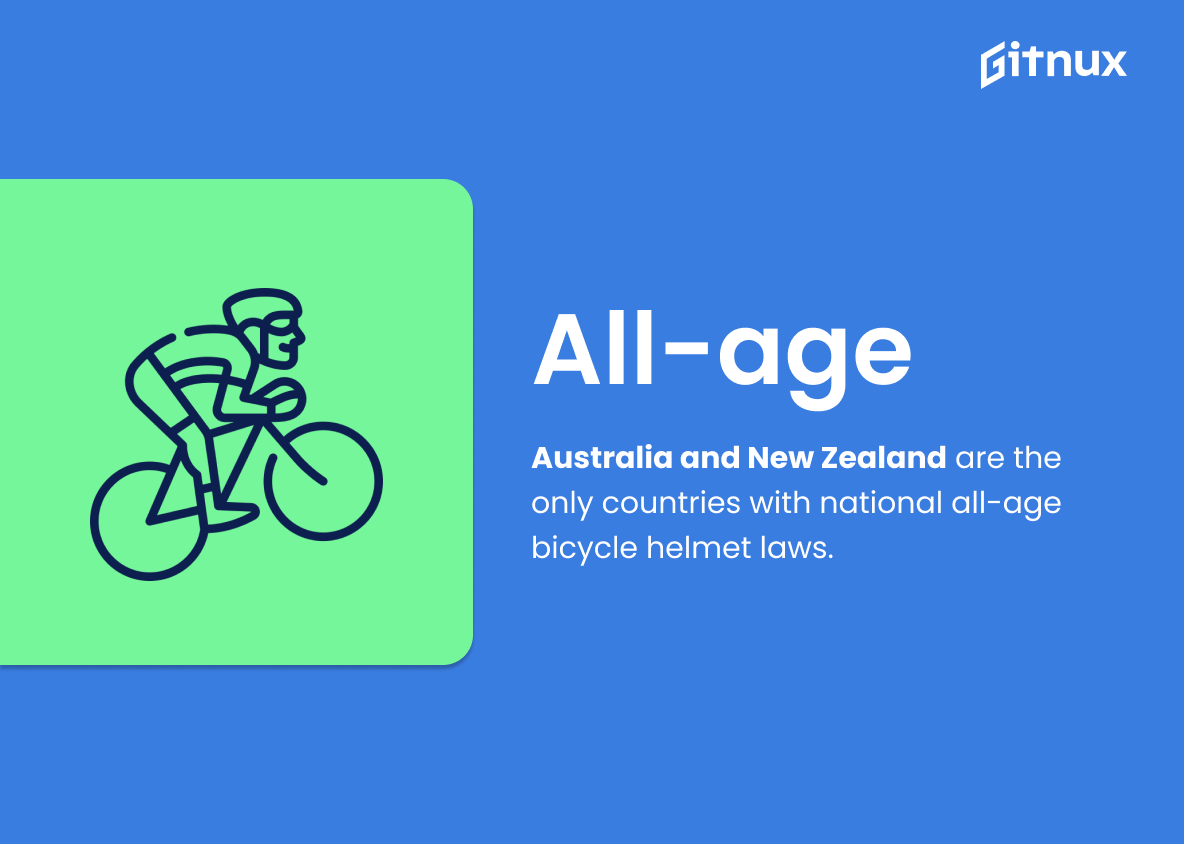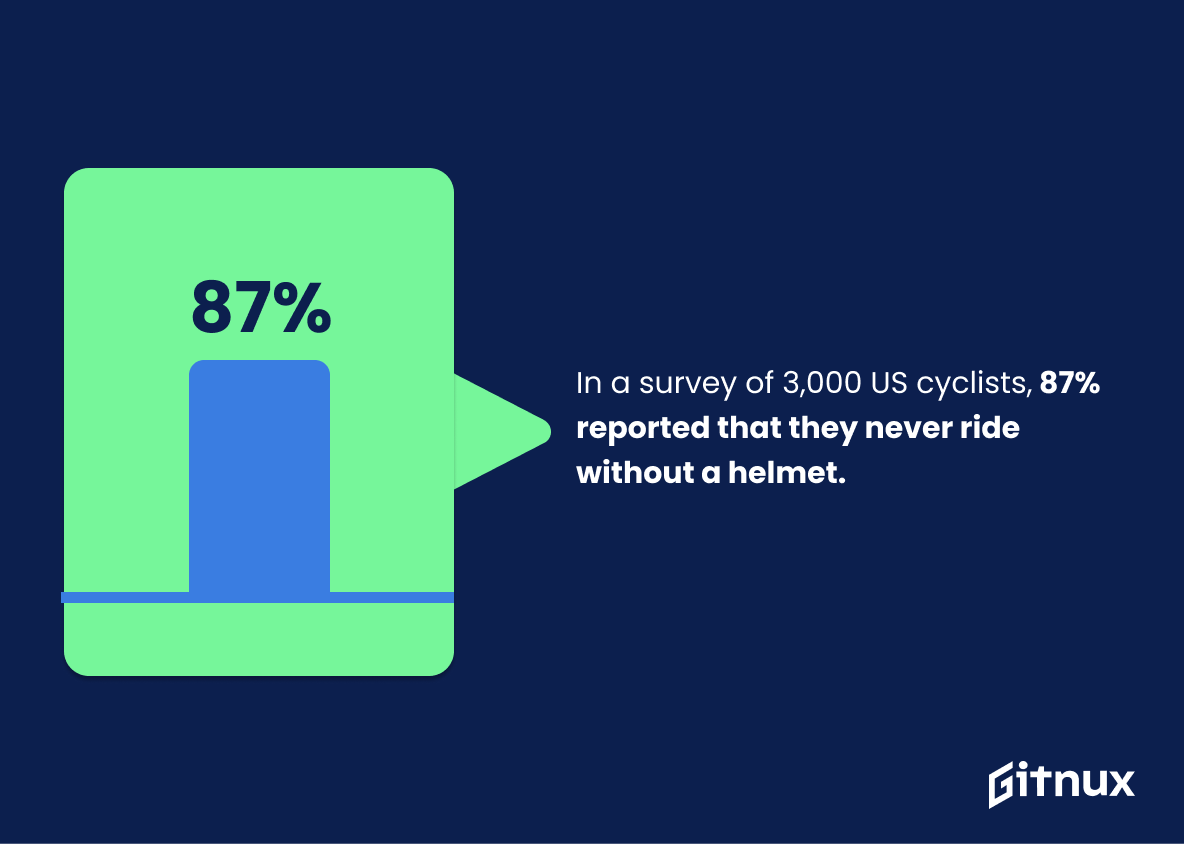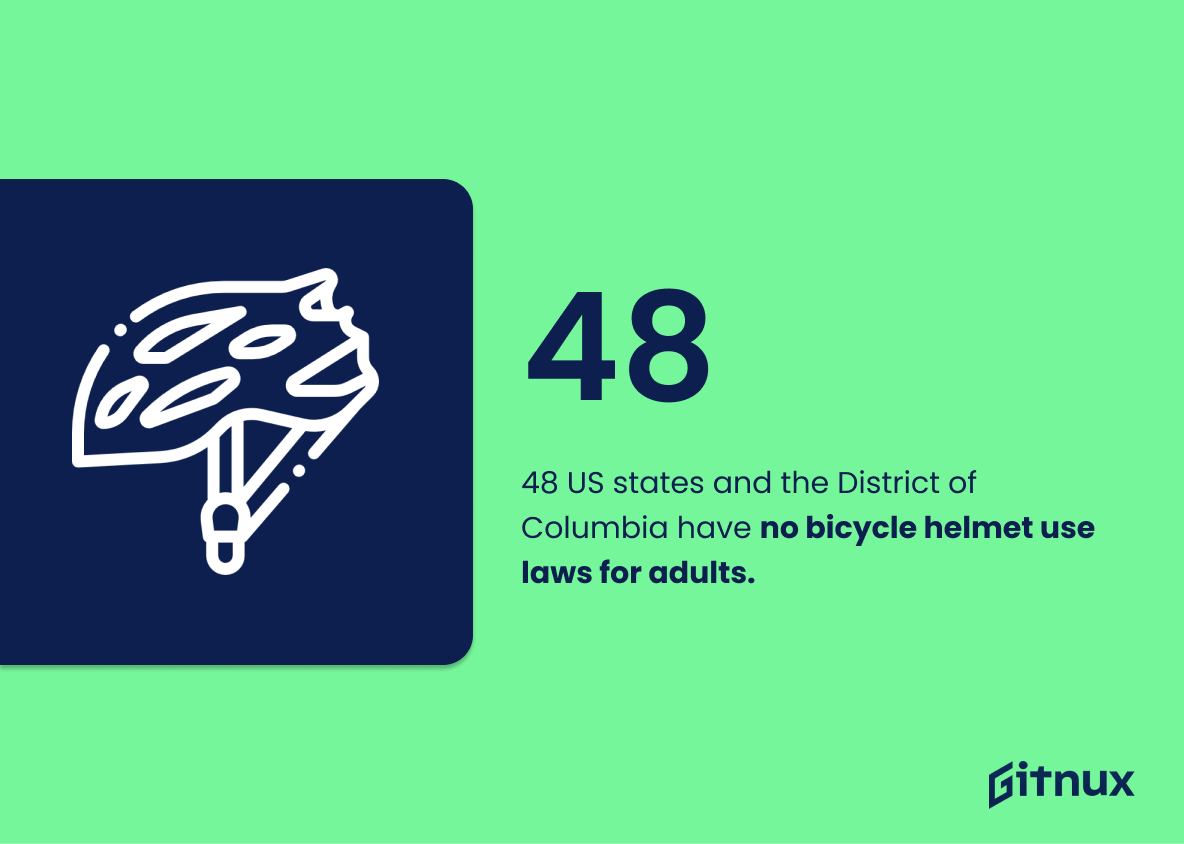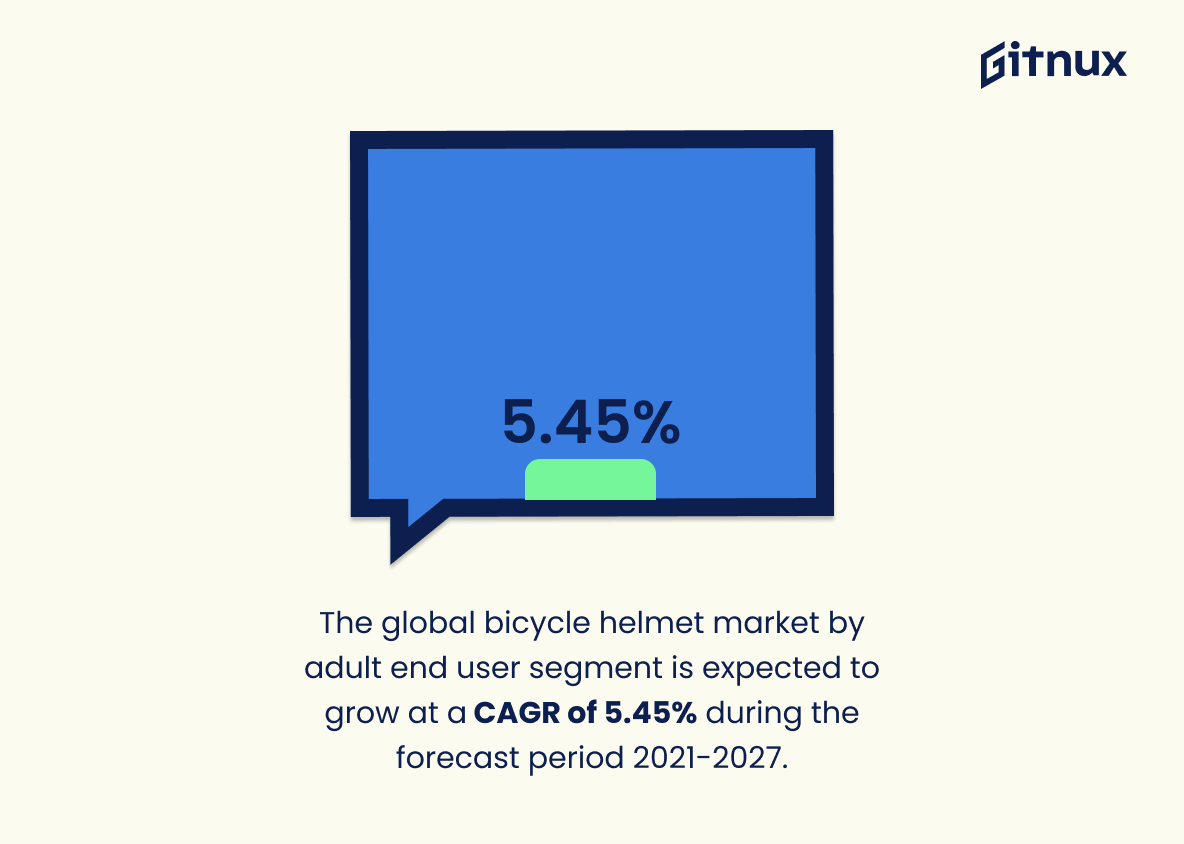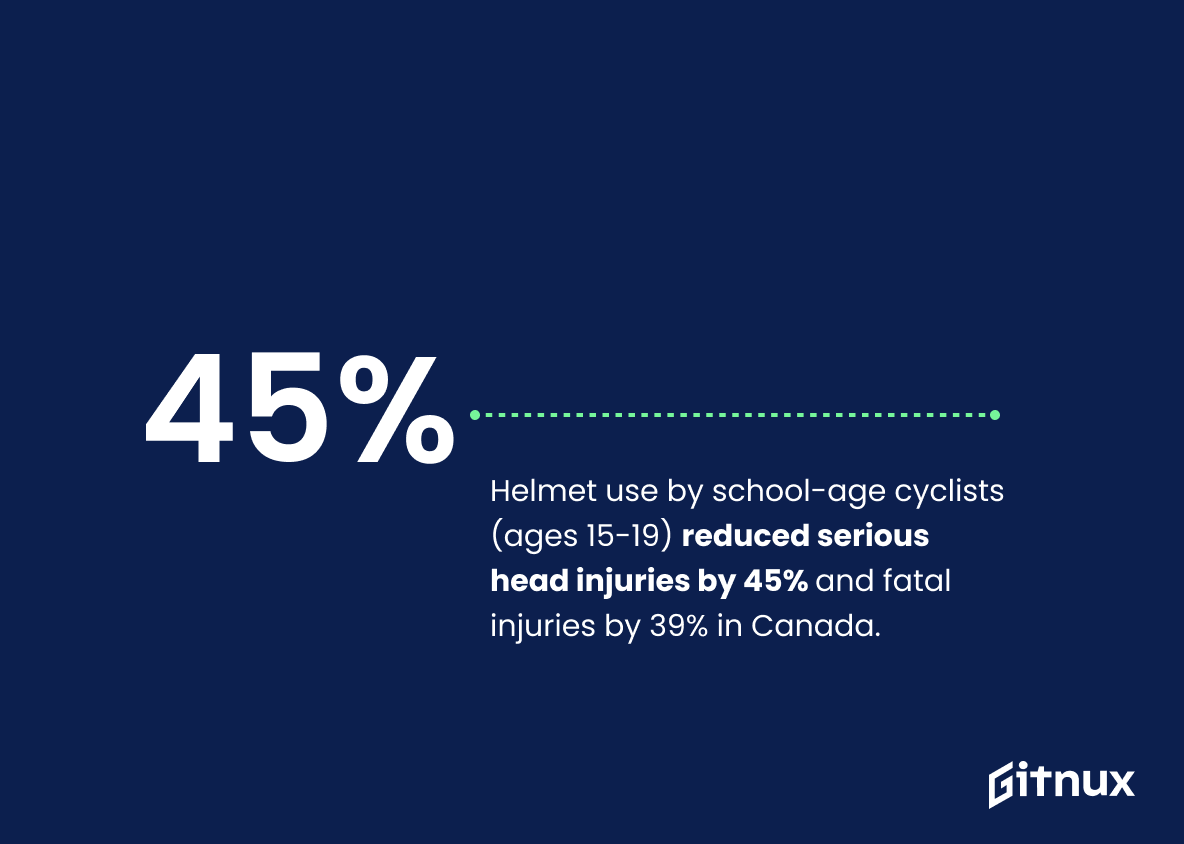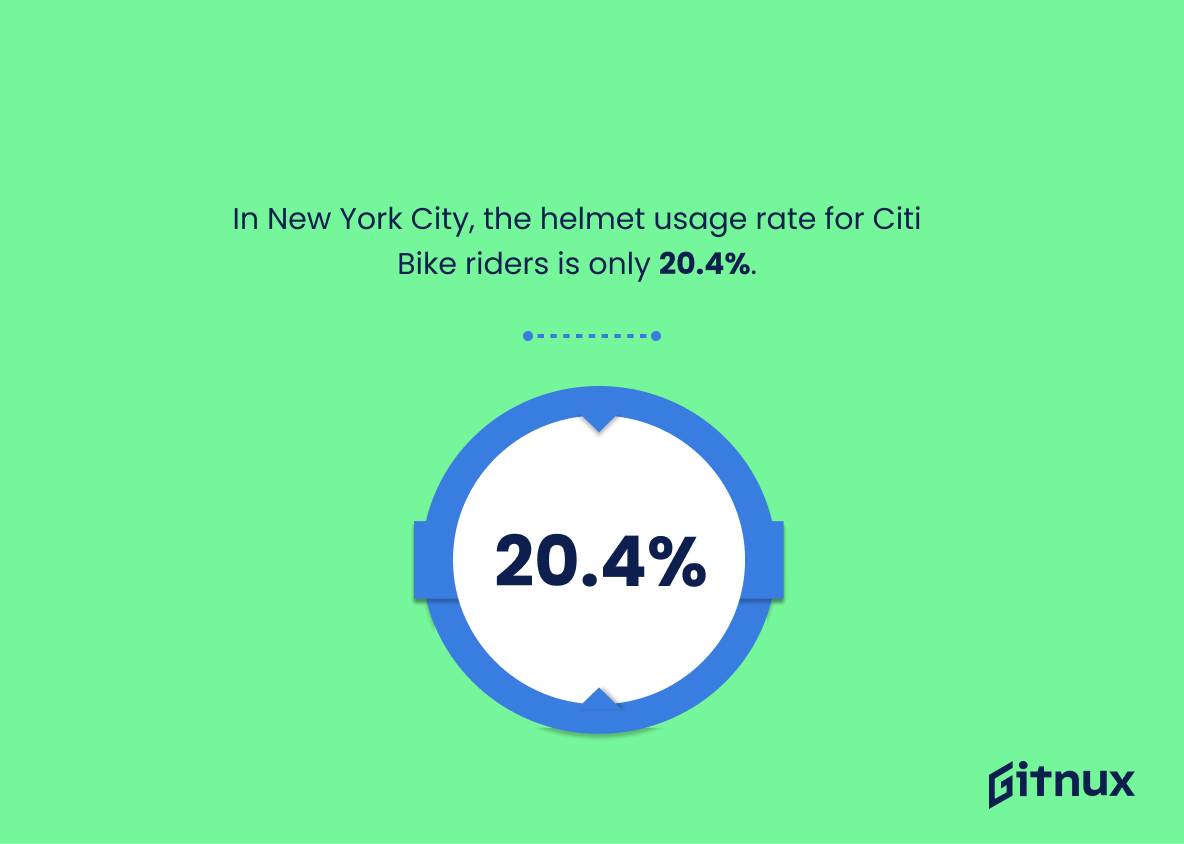Bicycle helmets are an important safety measure for cyclists of all ages. Studies have shown that wearing a helmet can reduce the risk of head and brain injuries by up to 88%, as well as reducing the risk of facial injuries by 65%. Despite this, only 20-25% of bicyclists in the US wear helmets regularly. Helmet use varies significantly depending on age; 38% among 18–24-year-olds, 55% among 25–39-year olds, and 68% among 40–64 year olds.
In 2016 97% of cyclists killed in accidents were not wearing helmets at the time – highlighting just how vital it is to wear one when cycling. Around 54 percent children and adolescents reported they “sometimes” or “always” wore bicycle helmets while riding their bikes according to research conducted in 2017. Additionally, studies show that helmet laws are associated with a 22 percent reduction in bicycle related fatalities amongst children aged 14 years old or younger.
Australia and New Zealand are currently the only countries with national all age bicycle helmet laws but 16 states within America also have similar legislation for riders under either 16 or 18 years old respectively – resulting in increased usage rates from 51%. The global market for bike helmets is expected to grow at a CAGR (Compound Annual Growth Rate) 5:35 % over 2021 – 2026 due largely increasing awareness about road safety measures such as using protective gear like cycle helments whilst cycling . In addition surveys suggest 87 %of American cyclist never ride without one whereas 70 % Finnish childen do so routinely . Bike share users however report much lower levels regular usage than personal bike owners , 13 : 6 compared 56 : 6 per cent respectively . Even still , some cities such as New York City remain below average with its current rate standing at 20 : 4 per cent .
This statistic is a powerful reminder of the importance of wearing a bicycle helmet. It demonstrates that the use of a helmet can drastically reduce the risk of head and brain injuries, making it a vital piece of safety equipment for cyclists. This statistic is a compelling argument for why cyclists should always wear a helmet when riding, and serves as a reminder of the potential consequences of not doing so.
Only 20-25% of bicyclists wear helmets in the US.
This statistic is a stark reminder of the importance of wearing a helmet when riding a bicycle. It highlights the fact that the majority of bicyclists in the US are not taking the necessary precautions to protect themselves from potential head injuries. This is a concerning statistic that should be addressed in order to ensure the safety of bicyclists.
Bicycle Helmet Statistics Overview
Bicycle helmet use in children is associated with a reduced risk of serious head injuries by 69%.
This statistic is a powerful reminder of the importance of wearing a bicycle helmet. It demonstrates that by taking the simple precaution of wearing a helmet, children can drastically reduce their risk of serious head injuries. This statistic is a compelling argument for why parents should ensure their children wear a helmet when riding a bicycle.
Helmet use varies by age: 38% of 18–24-year-olds, 55% of 25–39-year-olds, and 68% of 40–64-year-olds.
This statistic is a telling indication of the importance of helmet use in different age groups. It shows that as age increases, so does the likelihood of wearing a helmet while cycling. This is important to consider when discussing bicycle helmet statistics, as it highlights the need for increased education and awareness of the importance of helmet use in younger age groups.
97% of cyclists killed in accidents in the US in 2016 were not wearing helmets.
This statistic is a stark reminder of the importance of wearing a helmet when cycling. It highlights the fact that cyclists who do not wear helmets are significantly more likely to be killed in an accident than those who do. This is a powerful message that should not be ignored, and serves as a reminder of the need for cyclists to take safety precautions when riding.
Helmet laws are associated with a 22% reduction in bicycle-related fatalities among children.
This statistic is a powerful reminder of the importance of helmet laws in protecting children from bicycle-related fatalities. It demonstrates that when helmet laws are in place, the risk of death for children on bicycles is significantly reduced. This is an important statistic to consider when discussing the importance of bicycle helmet safety and the need for helmet laws.
Bicycle helmets can reduce the risk of facial injuries by 65%.
This statistic is a powerful reminder of the importance of wearing a bicycle helmet. With a reduction of 65% in the risk of facial injuries, it is clear that wearing a helmet can make a huge difference in protecting cyclists from serious harm. This statistic is a compelling argument for why cyclists should always wear a helmet when riding.
Australia and New Zealand are the only countries with national all-age bicycle helmet laws.
This statistic is a powerful reminder of the importance of bicycle helmet laws in protecting cyclists of all ages. Australia and New Zealand have taken the lead in implementing national all-age bicycle helmet laws, setting an example for other countries to follow. This is a crucial step in promoting cycling safety and reducing the number of cycling-related injuries and fatalities.
Bicycle helmet use increased by 51% in response to a California helmet law for children.
This statistic is a testament to the power of legislation in promoting safety. The 51% increase in helmet use shows that the California helmet law for children has been successful in encouraging cyclists to protect themselves. This is an important statistic to consider when discussing the effectiveness of bicycle helmet laws and the importance of wearing a helmet while cycling.
The bicycle helmet market is expected to grow at a CAGR of 5.35% to reach USD 1,118.57 million in 2026.
This statistic is a testament to the increasing importance of bicycle helmets in the modern world. As the market for bicycle helmets is expected to grow at a CAGR of 5.35%, it is clear that more and more people are recognizing the need for protective headgear while cycling. This statistic is a reminder of the importance of safety and the need to take the necessary precautions while cycling.
In a survey of 3,000 US cyclists, 87% reported that they never ride without a helmet.
This statistic is a powerful testament to the importance of wearing a helmet while cycling. It shows that the vast majority of cyclists recognize the need for protection and take the necessary precautions to ensure their safety. This is an important reminder that wearing a helmet is not only a smart decision, but a necessary one.
Wearing a helmet when cycling reduces the risk of a severe traumatic brain injury by 70%.
This statistic is a powerful reminder of the importance of wearing a helmet when cycling. It highlights the fact that helmets can drastically reduce the risk of a severe traumatic brain injury, making them an essential piece of safety equipment for cyclists. This statistic is a compelling argument for why cyclists should always wear a helmet when riding, and serves as an important reminder of the potential consequences of not doing so.
48 US states and the District of Columbia have no bicycle helmet use laws for adults.
This statistic is a stark reminder of the lack of safety regulations in place to protect adult cyclists. With no helmet use laws in place, cyclists are left vulnerable to the potential dangers of riding without the necessary protection. This is especially concerning given the fact that bicycle-related injuries and fatalities are on the rise in the US. It is essential that states take action to ensure the safety of cyclists by implementing helmet use laws.
The global bicycle helmet market by adult end user segment is expected to grow at a CAGR of 5.45% during the forecast period 2021-2027.
This statistic is a crucial indicator of the potential for growth in the bicycle helmet market. It shows that the market is expected to expand at a steady rate over the next few years, indicating that there is a strong demand for bicycle helmets. This is important information for anyone interested in the bicycle helmet industry, as it provides an indication of the potential for success in the market. Additionally, this statistic can be used to inform decisions about investments in the bicycle helmet market, as it provides an indication of the potential for returns.
Helmet use by school-age cyclists (ages 15-19) reduced serious head injuries by 45% and fatal injuries by 39% in Canada.
This statistic is a powerful testament to the life-saving potential of bicycle helmets. It shows that by simply wearing a helmet, school-age cyclists can reduce their risk of serious head injuries by 45% and fatal injuries by 39%. This is an incredibly important statistic that should be shared widely to encourage helmet use and help keep cyclists safe.
Over 70% of children in Finland wear a cycling helmet, and helmet usage for children under 12 is 87%.
This statistic is a testament to the importance of bicycle helmet safety in Finland. It shows that the country is taking the necessary steps to ensure the safety of its children while cycling, with an impressive 87% of children under 12 wearing helmets. This is a great example of how a nation can prioritize safety and set a positive example for other countries to follow.
In New York City, the helmet usage rate for Citi Bike riders is only 20.4%.
This statistic is a stark reminder of the importance of wearing a helmet when riding a bicycle. With such a low helmet usage rate, it is clear that many Citi Bike riders in New York City are not taking the necessary precautions to protect themselves while cycling. This statistic serves as a call to action for cyclists to prioritize their safety and wear a helmet every time they ride.
Conclusion
The statistics presented in this blog post demonstrate the importance of wearing a bicycle helmet. Studies have shown that helmets reduce the risk of head and brain injuries by 85-88%, facial injuries by 65%, and serious head injuries among children by 69%. Helmet laws are associated with a 22% reduction in bicycle-related fatalities, while helmet use increased 51% following California’s law for children. Additionally, 97% of cyclists killed in accidents were not wearing helmets.
Helmet usage varies significantly between countries; Australia and New Zealand are the only two countries with national all-age bike helmet laws, while 16 states plus DC have such laws for riders under 16 or 18 years old. In addition to these legal requirements, surveys show that 87% of US cyclists never ride without a helmet – an indication that many people recognize its value even when it is not legally required to do so. The global market for bicycle helmets is expected to grow at 5%-5.45%, indicating increasing demand from both recreational users as well as those who rely on them daily due to local regulations or personal preference alike.
Overall, there is strong evidence supporting the effectiveness of using bicycles helmets across different age groups and contexts around the world – making it clear why they should be worn whenever cycling takes place.
References
0. – https://www.worldpopulationreview.com
1. – https://www.globenewswire.com
2. – https://www..nyc.gov
3. – https://www.peopleforbikes.org
4. – https://www.link.springer.com
5. – https://www.pubmed.ncbi.nlm.nih.gov
6. – https://www.one.nhtsa.gov
7. – https://www.injuryprevention.bmj.com
8. – https://www.ncbi.nlm.nih.gov
9. – https://www.bhsi.org
10. – https://www.ohsonline.com
11. – https://www.iihs.org
12. – https://www.themanufacturer.com
